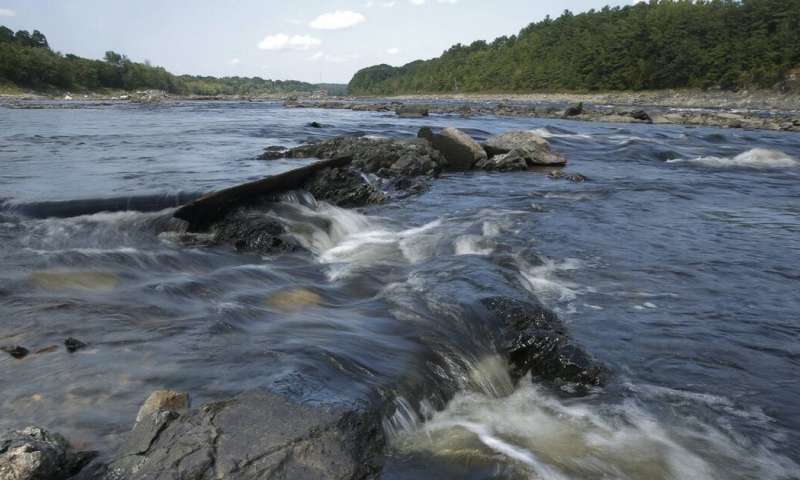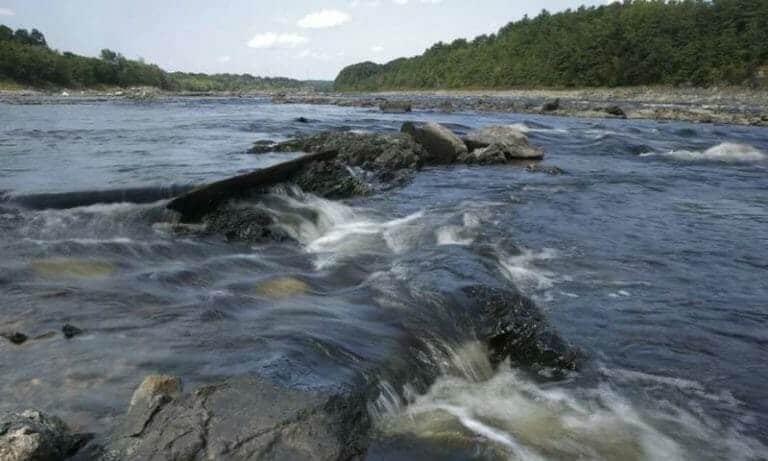Photo: Maine’s Penobscot River flows freely where the Veazie Dam once stood. Dam removals have reopened the river to 12 native fish species. Credit: Gregory Rec/Portland Portland Press Herald via Getty Images
Across the United States, dams generate hydroelectric power, store water for drinking and irrigation, control flooding and create recreational opportunities such as slack-water boating and waterskiing.
But dams can also threaten public safety, especially if they are old or poorly maintained. On May 21, 2020, residents of Midland, Michigan were hastily evacuated when two aging hydropower dams on the Tittabawassee River failed, flooding the town.
I’m an ecosystem scientist and have studied the ecology of salmon streams in the Pacific Northwest, where dams and historical over-harvest have drastically reduced wild populations of these iconic fish. Now I’m monitoring how river herring are responding to the removal of two derelict dams on the Shawsheen River in Andover, Massachusetts.
There’s growing support across the U.S. for removing old and degraded dams, for both ecological and safety reasons. Every case is unique and requires detailed analysis to assess whether a dam’s costs outweigh its benefits. But when that case can be made, dam removals can produce exciting results.
Pros and cons of dams
It’s relatively easy to quantify the benefits that dams provide. They can be measured in kilowatt-hours of electricity generation, or acre-feet of water delivered to farms, or the value of property that the dams shield from floods.
Some dam costs also are obvious, such as […]
Full article: When dams cause more problems than they solve, removing them can pay off for people and nature



